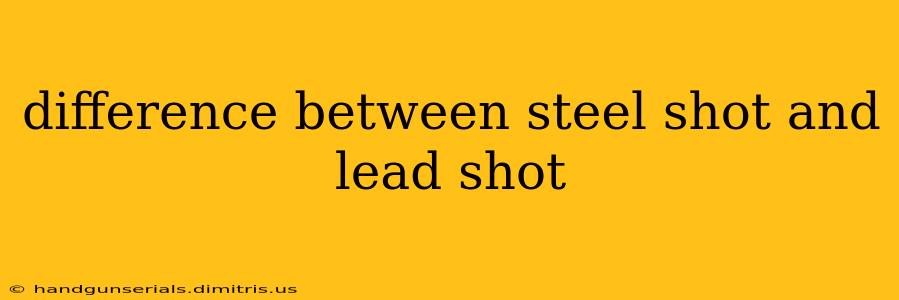Choosing the right shot for your firearm is crucial for accuracy, performance, and ethical hunting practices. This detailed comparison explores the key differences between steel shot and lead shot, helping you make an informed decision based on your specific needs.
Environmental Impact: The Key Differentiator
The most significant difference between steel and lead shot lies in their environmental impact. Lead is a highly toxic heavy metal that poses a serious threat to wildlife, particularly waterfowl, through ingestion and bioaccumulation. This toxicity led to widespread restrictions and bans on lead shot in many areas for hunting waterfowl and other sensitive species. Steel, on the other hand, is non-toxic and biodegradable, making it a much more environmentally friendly alternative.
Ballistic Properties: Performance on the Range
While both steel and lead shot deliver effective stopping power, their ballistic properties differ significantly, impacting their performance in various situations:
Density:
- Lead: Significantly denser than steel, meaning lead shot retains more energy at longer ranges. This translates to a flatter trajectory and greater penetration power.
- Steel: Less dense, leading to a faster energy loss over distance. Steel shot trajectories are generally less predictable at longer ranges.
Hardness:
- Lead: Relatively soft, deforming easily upon impact. This can lead to increased shot deformation, potentially affecting patterns and penetration.
- Steel: Much harder, maintaining its shape better on impact. This can result in increased penetration and potentially more damage to the target. However, the harder nature can also lead to more barrel wear.
Pattern Density:
- Lead: Generally produces denser patterns due to its higher density and softer nature. A tighter pattern improves the chances of a clean kill.
- Steel: Often produces less dense patterns, especially at longer ranges. This requires careful shot selection and aiming to ensure effective hunting.
Recoil:
- Steel: The lower density of steel shot generally translates to slightly less recoil than lead shot of the same size, offering a more comfortable shooting experience for some users.
Legal Considerations and Regulations: Check Local Laws
Before making a decision, it's crucial to check your local and regional regulations. Many jurisdictions have strict laws regarding the use of lead shot, particularly for waterfowl hunting. Knowing the legal limitations in your hunting area is essential to avoid penalties.
Choosing the Right Shot: Practical Applications
The best choice between steel and lead shot depends on the specific application:
-
Waterfowl Hunting: Steel shot is the preferred and often legally mandated choice due to its non-toxic nature. However, hunters need to compensate for the reduced range and potentially less dense patterns.
-
Upland Game Hunting: Lead shot remains a viable option in many areas, offering better performance at longer ranges. However, the increasing adoption of steel shot in these areas is also noteworthy.
-
Sporting Clays and Target Shooting: Both steel and lead shot are used, depending on the specific discipline and regulations.
Conclusion: A Responsible Choice
While lead shot provides superior ballistic performance in some aspects, its environmental impact is undeniable. Steel shot, despite some performance limitations, represents a more responsible and sustainable choice for hunters and shooters who prioritize environmental conservation and ethical hunting practices. Always check your local regulations and select the shot type that best suits your needs while adhering to all applicable laws.

